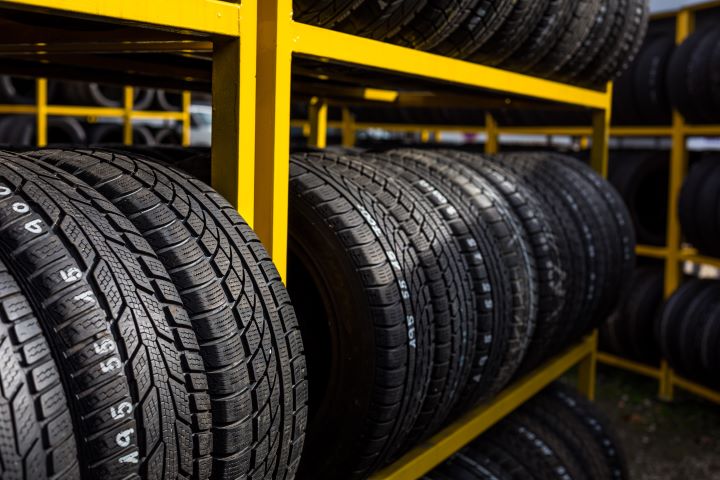Key Insights into Nokian Tire Costs You Should Know
When considering tire purchases, Nokian stands out as a Finnish manufacturer with a reputation for producing high-quality tires designed for challenging weather conditions. Understanding the pricing structure and value proposition of Nokian tires can help consumers make informed decisions about their vehicle's safety and performance needs. This comprehensive guide explores the various factors that influence Nokian tire pricing and provides practical insights for potential buyers.

Understanding Nokian Tire Price Ranges
Nokian tires typically fall into the premium pricing category, reflecting the company’s focus on advanced technology and specialized engineering. Entry-level Nokian tires generally start around $100-150 per tire for standard passenger vehicles, while high-performance and specialty tires can range from $200-400 or more per tire. The price range varies significantly based on tire size, model type, and specific features such as winter performance capabilities or run-flat technology.
The company’s winter tire lineup, which includes models like the Hakkapeliitta series, often commands higher prices than all-season alternatives due to specialized rubber compounds and advanced tread designs. These premium features contribute to superior performance in snow and ice conditions, justifying the higher cost for consumers in regions with harsh winter climates.
Factors Affecting Nokian Tire Price Points
Several key elements influence the final cost of Nokian tires. Tire size represents one of the most significant pricing factors, with larger diameter wheels and wider treads typically carrying higher price tags. Performance specifications also play a crucial role, as tires designed for high-speed driving or extreme weather conditions incorporate more expensive materials and manufacturing processes.
Manufacturing location affects pricing as well. While Nokian produces tires in multiple facilities worldwide, tires manufactured in Finland often carry premium pricing due to higher production costs and the company’s reputation for quality control. Seasonal demand fluctuations can also impact prices, with winter tires experiencing higher costs during peak replacement seasons in fall and early winter months.
Common Nokian Tire Models and Price Comparison
Nokian offers several popular tire lines catering to different driving needs and budgets. The Nokian One all-season tire line provides year-round performance at moderate price points, while the Hakkapeliitta winter series represents the company’s flagship cold-weather offerings. The WR series combines all-weather capabilities with performance-oriented design, positioning itself in the mid-to-upper price range.
Understanding model differences helps consumers evaluate value propositions. Entry-level models focus on basic performance and durability, while premium lines incorporate advanced features like noise reduction technology, extended tread life warranties, and specialized compounds for specific weather conditions. These distinctions directly correlate with pricing tiers across the Nokian product lineup.
| Tire Model | Size Example | Estimated Price Range | Key Features |
|---|---|---|---|
| Nokian One | 215/60R16 | $120-160 | All-season, standard performance |
| Nokian WR G4 | 225/50R17 | $160-220 | All-weather, enhanced grip |
| Hakkapeliitta R5 | 205/55R16 | $180-250 | Premium winter, studless |
| Hakkapeliitta 10 | 215/65R16 | $200-280 | Studded winter, extreme conditions |
Prices, rates, or cost estimates mentioned in this article are based on the latest available information but may change over time. Independent research is advised before making financial decisions.
Maximizing Value When Purchasing Nokian Tires
Smart purchasing strategies can help consumers optimize their Nokian tire investment. Timing purchases strategically can yield significant savings, with many retailers offering promotional pricing during off-peak seasons. Spring purchases for winter tires and late summer buying for all-season replacements often present cost advantages.
Comparing prices across multiple retailers, including local tire shops, national chains, and online vendors, helps identify competitive pricing. Many retailers offer installation packages, road hazard warranties, and tire rotation services that add value beyond the initial purchase price. Additionally, considering tire longevity and warranty coverage when evaluating total cost of ownership provides a more complete picture of value.
Proper tire maintenance extends service life and maximizes investment returns. Regular rotation, proper inflation, and wheel alignment help ensure even wear patterns and optimal performance throughout the tire’s lifespan. These practices can effectively reduce the per-mile cost of tire ownership while maintaining safety and performance standards.
Nokian tires represent a premium investment in vehicle safety and performance, with pricing that reflects advanced engineering and specialized manufacturing processes. While initial costs may exceed budget tire alternatives, the combination of enhanced safety features, extended tread life, and superior weather performance often justifies the higher price point for many consumers. Understanding the factors that influence Nokian tire pricing enables informed decision-making and helps buyers select the most appropriate tire model for their specific needs and budget constraints.




